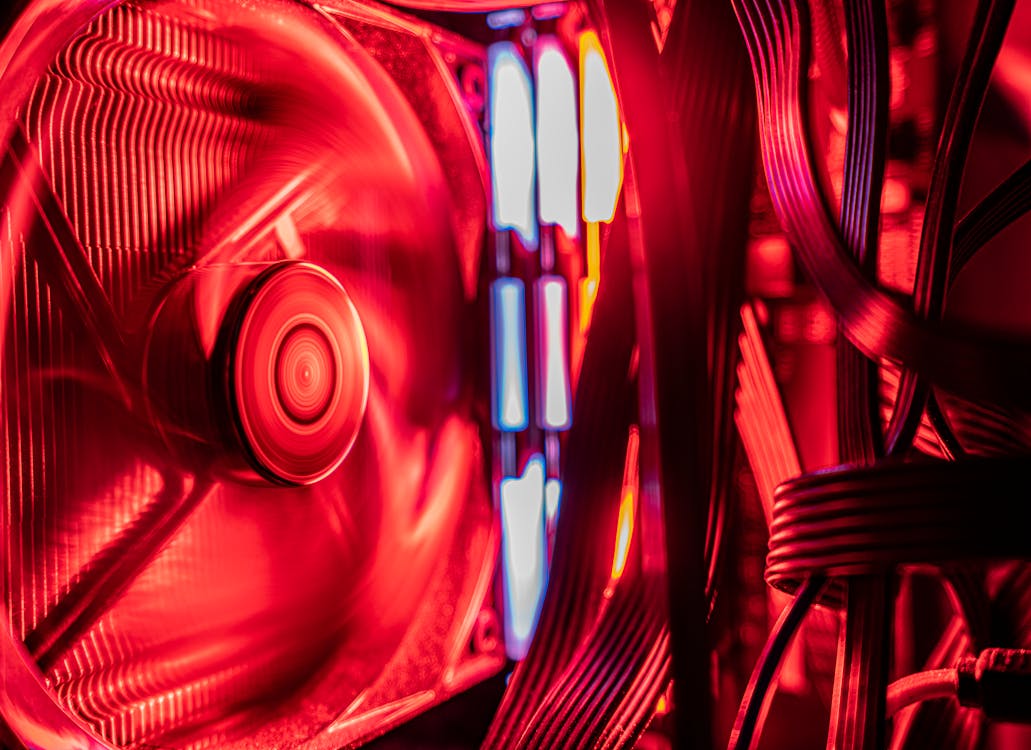
Photo by Dave Morgan from Pexels
Artificial intelligence (AI) chips are cranking up the heat—literally—sparking a race for liquid cooling solutions that promise to keep energy costs in check. As generative AI continues to push the limits of computing power, companies are diving into innovative cooling technologies to tame the blistering temperatures of high-performance CPUs and GPUs, all while keeping sustainability at the forefront of their designs.
In 2022, data centers consumed between 240 and 340 terawatt-hours of electricity, accounting for around 2% of global energy use, according to the International Energy Association. This figure could rise to about 8% by 2030, driven largely by AI and companies such as Nvidia, AMD, and Intel that indicated their new releases will likely come with a significant increase in power requirements.
Traditional cooling systems exacerbate the problem, often consuming as much energy as the computing hardware, leading to unsustainable energy usage. Liquid cooling offers a more efficient alternative, with the data center liquid cooling market projected to exceed $15 billion within five years, according to Dell’Oro Group.
Udi Paret, chief business officer at ZutaCore, became overwhelmed by this sudden growth. “They are now demanding liquid cooling and prescribing which liquid cooling and then, together with the manufacturers like us, are going to the server OEMs and ODMs and are shopping around which one can now deliver the platform,” he said.
Companies like Accelsius are now pioneering direct-to-chip cooling technologies designed to accommodate the increasing power requirements of next-generation chips. CEO Josh Claman notes that as chips evolve, the need for robust cooling solutions will only intensify. For instance, Nvidia’s upcoming Blackwell GPU is expected to require 1,200 watts, about a 70% increase from previous models.
This growth provides an opportunity for companies to partner with liquid cooling vendors, reducing energy costs and carbon footprints. Paret stated that these partnerships can help fulfill customer demands for customized cooling solutions, allowing solution providers to expand their business.
Capitalizing on the Liquid Cooling Boom
Solution providers, who help companies adopt new technologies, are increasingly important as they can offer high-value services, benefiting from the growing market for advanced cooling systems. Liquid cooling not only makes data centers more efficient but also allows them to fit more servers into the same space, boosting overall performance.
Bernie Malouin, CEO of JetCool Technologies, pointed out that their solutions can enable customers to maximize their power budgets, allowing for additional servers without exceeding energy limits.
The demand for liquid cooling is also expected to grow in edge computing environments. Nathan Blom, co-CEO of Iceotope, explained that edge locations often face power constraints, making liquid cooling an attractive option. By reallocating power from cooling systems to compute resources, operators can enhance the value of their edge sites.
Blom advises that training sales staff and listening to customer needs will be critical for success in this evolving market. With the right strategies, solution providers can position themselves to thrive in the burgeoning liquid cooling sector.
“As these chips go from 200 to 400 to 1,000 to 2,000 watts per socket, you don’t want to be called back as a reseller and [have the customer say], ‘You sold us this solution three years ago and it can already not cool my latest server chips,’” Claman said.
Liquid Cooling as a Sustainable Solution
Businesses are recognizing the necessity of sustainability, giving birth to a growing movement toward integrating renewable energy sources within data centers. By reducing energy consumption, liquid cooling can lower operational costs and carbon emissions.
Liquid cooling represents just one pillar of a multi-faceted approach to energy efficiency. Companies like Nvidia are developing energy-efficient AI accelerator chips. Israeli startup NeuReality is also creating add-ons that enhance the efficiency of existing processors, resulting in potential energy savings of up to 90% when integrated with certain systems.
The growing energy consumption of AI is alarming, but the emergence of efficient cooling solutions offers hope for a sustainable future. The merger of AI and efficient cooling systems exemplifies how technological advancement can still evolve without compromising the environment.




















